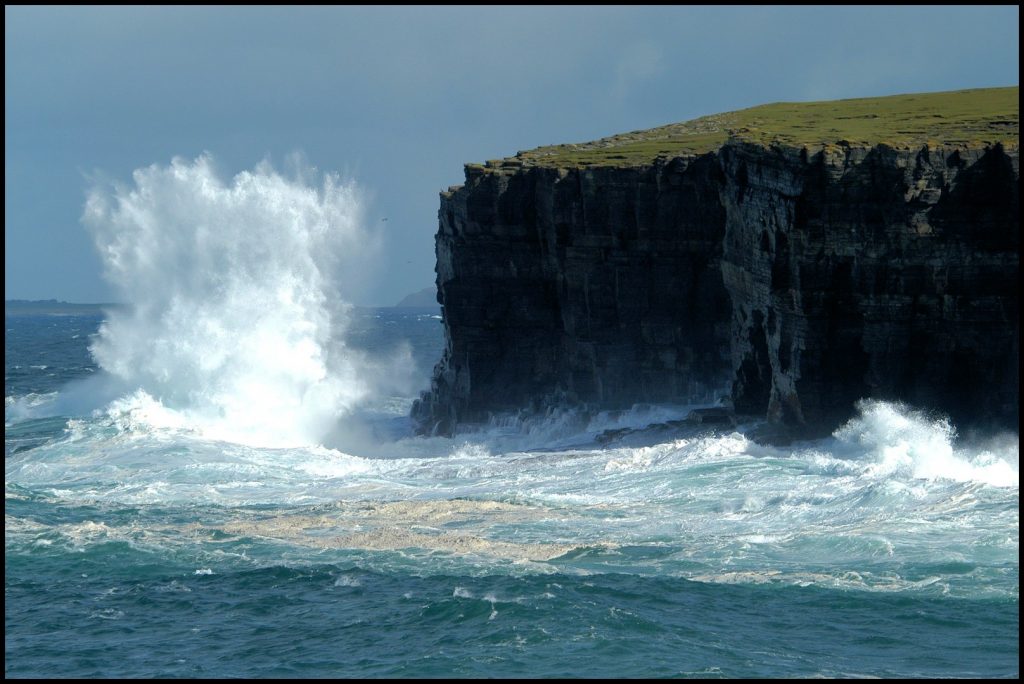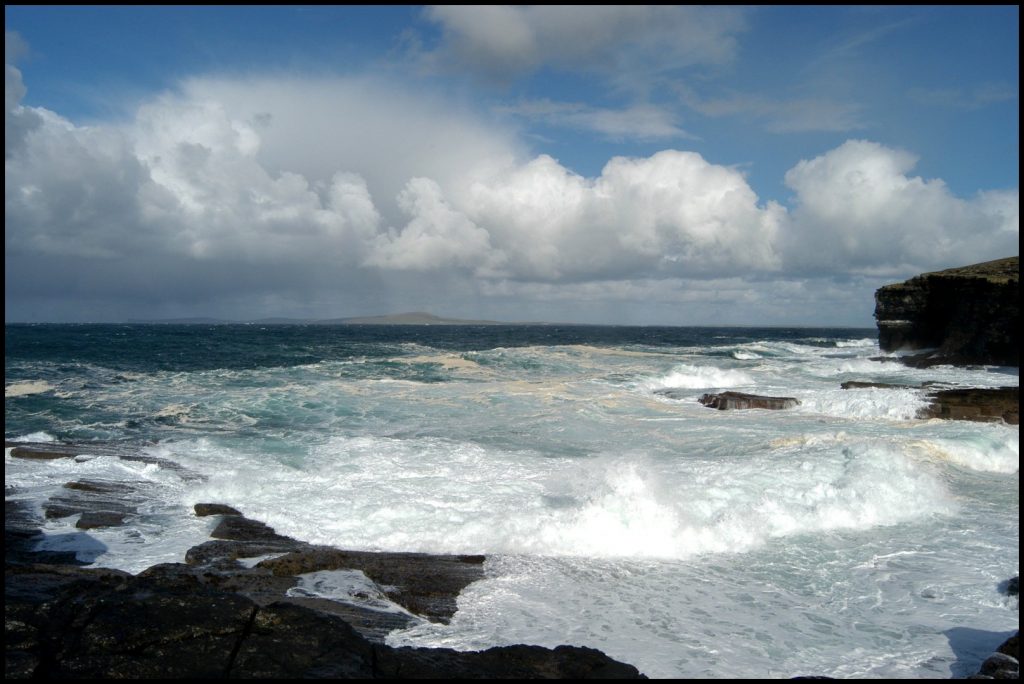Grithin is the name of a boulder-strewn bay at the angle of the coast between the cliffs on the north-west of Saviskaill Head, Rousay, and those behind the old houses of Skatequoy, Stennisgorn and Grudwick.
Grudwick was recorded in the 1503 Rental, consisting of a 1d. land. Its name and situation was long forgotten, but from its relative placing in the Rental it must have been near Grithin, and had its name from the bay or ‘wick’ of which the upper end is now Grithin. The Old Norse word grjót-vik means ‘stony-wick’, which refers to the boulders on the beach at Grithin.
At this inlet there is a very steep beach, composed of huge boulders rounded by the action of the pounding waves. Another feature in the dramatic rock formation here is ‘15 Man Cave’ where, in 1825, that number of Rousay men hid from a Press Gang for two weeks.
Grithin, or Quoygruithen, was the name of a house that stood nearby dating back to about the year 1500. Hugh Craigie is on record as its tenant in 1739.
Another Hugh Craigie lived at Lerquoy, Wasbister, and in 1808 he married Sicilia Gibson of Langskaill. They had five children; Mary was born on January 6th 1810; twins William and Barbara were born at Grithin on April 27th 1811; Hugh was also born at Grithin, on May 1st 1813, and Isabel was born on April 20th 1815 at Hillhouse above Claybank.
In the Rousay Birth Register of 1817 the house Greethen is mentioned, and in later years, although with alternative spellings, the same house is recorded; in 1819 and 1822, Grithen; and in 1829, Gruthen.
John Inkster married Betty Marwick of Force, the old name for the Wasbister farm of Furse, on February 4th 1814 and between 1815 and 1842 they had ten children. The first of these, Janet, was born on September 3rd 1815 at Force. The next three children were born at Grithin; Jean, on June 21st 1817, John, on August 8th 1819, and Ann, on July 16th 1822. Then another Ann was born on February 6th 1825 at Tou. David was born on May 20th 1827 at Quoygray. The other four children were born back at Grithin; Bella, on August 8th 1829, James, on December 25th 1831, Robina, on November 7th 1834, and finally Mary, who was born on July 16th 1842.
Grim tales are told of some dark times in Wasbister’s past. This one concerns a shipwreck at the Bay of Grithin many years ago. A man from Westray, who had taken some cattle to the market in Kirkwall, was sailing back home feeling well pleased with the prices he had got for his beasts when a storm arose. It is not known whether the boat was lost and he managed to scramble ashore to die shortly afterwards, or whether he was drowned and was later washed ashore. Near the Bay of Grithin are two stones, which are said to mark the head and foot of the Westray man’s grave. At the nearby house of Grithin there lived a man who never had two pennies to rub together. It is said he was never short of money after the unfortunate Westray man came ashore, almost on to his doorstep.
As no evidence of Grithin, Stennisgorn or Grudwick remains I have attached some photos of the Bay of Grithin, and its surrounding coastal features.


